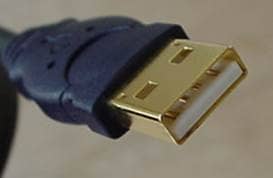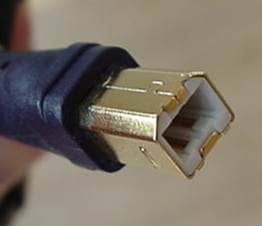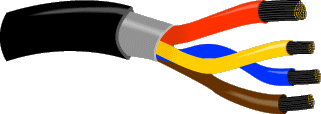Universal Serial Bus (USB) has made our lives easier in more than one ways, undoubtedly! Before USB, for a layperson to connect five different external devices (Monitor, Keyboard, Mouse, Printer, and Speakers) to her/his computer or Central Processing Unit (CPU), five different cables were required. That’s just the desktop computers, cables that were used to plug in your digital cameras, gaming, and video devices are apart from that. Until in 1997, all the hardware tech giants at the time decided to come up with a solution, a universal interface. USB has majorly replaced serial ports and parallel ports, since it can connect up to 127 devices to a computer. USB has now became the standardized connection interface for computer peripherals and personal computers, along with being used as power charger for portable devices. USB is the most promising solution being an inexpensive and medium-speed plug and play interface that is compatible with practically any device on the planet. Future USB technology can be used with a converter to add backward compatibility as new technology evolves. Clck here for details about HDMI to USB converters.
Features of USB
The total amount of data transferring capability of USB is a maximum of 12 megabits of data per second (12Mbps), where an individual device can ask for six megabits per second. For a device, a typical USB connector is called ‘A Connection.’ Many USB devices are available with their built-in cable where it has an A connection compatibility. For others, the device may have a socket compatible with a B Connector. The A and B connectors are used to avoid confusion. ‘A’ connectors head upstream towards the computer, whereas ‘B’ connectors head downstream to connect individual devices.


Credits: Mind Pride
Let us dig deeper into some other interesting features of USB. During the data transfer, the computer acts as the host. 127 devices can be connected to the computer directly or using USB Hub. Individual USB cables can be 5 meters long, and USB hubs can help to extend it to 30 meters farther from the host.

Inside a USB connector cable, there are four separate wires; red for power, brown for ground, and a twisted pair of wires for data transfer, blue and yellow. The USB, as a power source can supply +5 volts or 500 mA current. The USB device is flexible to be plugged or unplugged at any time, because it is hot swappable. Some hosts have the capacity to put USB devices to sleep in power-saving mode.
Data Transfer
Once plugged into a host/computer, the operating system auto-detects the new device and requests the driver disk. In that case where the device had previously been installed, the system just activates it and starts communicating. It sends queries to all the bus-connected devices, assigning each address in a process called enumeration. When each device is acknowledged by the host as connected, we say that all devices have been enumerated. The host also learns the type of data it wants to transfer from the device.
Interrupt: The low-powered devices choose this type of data, due to the compactness of data they would be sending. Such as mouse and keyboard.
Bulk: The high-powered devices like printers transfer data in a big chunk format. A chunk of 64-byte of data is sent to the printer and verified of its correctness.
Iso-chronous: Speakers will use a streaming type of data in real time, called the iso-chronous mode. No error correction is done in this mode of communication.
The communication between host and devices, other than data transfer, takes place in the form of control packets, which may contain query parameters or commands. The enumerated devices are inspected for the total bandwidth that has been requested. Iso-chronous and Interrupt type devices can consume up to 90% of the 12 Mbps of available bandwidth, after which the access to them is denied. The rest of the 10% is used to accommodate bulk data transfers and control packets.
The available bandwidth is divided into frames controlled by the host. Each frame begins every millisecond, totaling 1,500 bytes. Each frame guarantees a slot for Iso-chronous and Interrupt traffic. As far as the Bulk and Control traffic is concerned, they are given whatever slot is left. Detailed working of USB can be seen here.
What more should we expect from the future of USB? Well, USB 2.0 specs claim an increase of 10-20 times in the speed with backward compatibility in current devices. For more information, watch the video below.
Credits: MindPride
Do you want to add something? Share with us in the comments section below.


